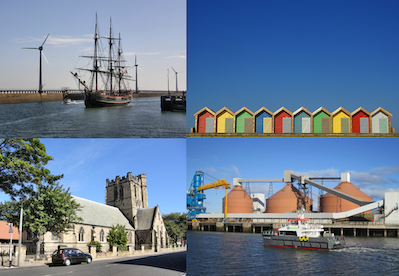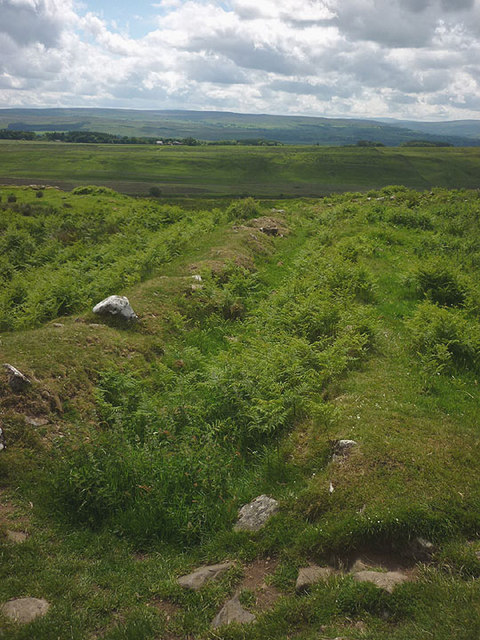Topics > Northumberland > Blyth > Blyth, 1848
Blyth, 1848
BLYTH, SOUTH, or Blyth Nook, a sea-port and chapelry, partly in the parish of Horton, but chiefly in that of Earsdon, union of Tynemouth, E. division of Castle ward, S. division of Northumberland, 9½ miles (E.S.E.) from Morpeth, 16 (N.N.E.) from Newcastle, and 283 (N.N.W.) from London; containing, with the lordship of Newsham, and exclusively of that part of the town which is in the parish of Horton, 1,921 inhabitants. The river and port were of much importance to the bishops of Durham in ancient times, and are named in the records with the Tyne, Wear, and Tees, as subject to their jurisdiction, with all the royal rights appertaining to their possession. The place was the property of a younger branch of the Cramlingtons in the reign of Elizabeth, and in the time of Charles I. was possessed by Robert Cramlington; but his estate being sequestrated by the parliament, it was purchased by a wealthy London merchant, by whom it was sold to Col. Thomas Ratcliff; and is now in the possession of Sir M. White Ridley, Bart., a descendant of the family to which the martyred Bishop Ridley belonged. In August, 1795, the Duke of York, accompanied by Prince William of Gloucester, reviewed the troops encamped on the coast of Northumberland, upon Blyth sands, the whole force consisting of 13 regiments, who performed their various evolutions in the presence of nearly 60,000 persons.
The town, which is advantageously situated on the north side of the Blyth, at its influx into the North Sea, is remarkably pleasant and well built; and though at the commencement of the present century it was of slight importance, and its streets narrow and few, it is now extensively engaged in commerce, and ranks among the most bustling small sea-ports of the kingdom. The trade consists principally in the export of coal from the Cowpen and other collieries, and the importation of various articles of local consumption. The produce of the Bedlington iron-works, which are about three miles distant, is brought down the Blyth to this port for shipment; it includes a great number of locomotive engines and vast quantities of machinery, justly noted for their excellence, and which are sent to all parts of the world. In a recent year, 8 foreign and 120 coasting vessels, with cargoes, entered inwards, and 223 foreign and 826 coasting vessels cleared outwards; 190,000 tons of coal were exported, and the amount of duties received was £1641: the number of ships registered as belonging to the port and to Seaton-Sluice, is 100. The river near its mouth abounds with sea-fish, and the higher parts of the stream are frequented by fresh-water fish of extremely fine quality. The harbour, the entrance to which is at all times free from obstruction, is quite secure, even during the most tempestuous weather, but is accessible only to vessels of moderate burthen; the tide flowed over an extensive waste on the western side of it, but, with a view to counteract this, a quay has been formed on the margin of the river. A circular stone lighthouse was built in 1788, and there is also a beacon-light, called the Basket-Rock light: a dry-dock was constructed in 1811. The custom-house here had formerly the control of the coast as far south as Cullercoats, where large quantities of coal were shipped, and the vessels had to pay their dues and clear out at Blyth; but since the Tyne has risen into such importance, the whole is now under the Newcastle customs. Ship building and repairing (for which latter there is a patentslip), and likewise sail-making, are carried on: there are some roperies, a large brewery, and extensive timber, iron, and slate yards; also two steam, and three wind flour-mills. A branch of the Newcastle and Berwick railway extends to this place. There are excellent and commodious inns; and vapour, shower, and warm baths. A bench of magistrates hold a monthly court. The chapel was erected by the then Sir M. W. Ridley, in 1751: the living is a donative curacy, in the patronage of the present baronet, with a net income of £93. The tithes have been commuted for £227. 6. There are places of worship for Presbyterians, Scottish Seceders, Wesleyans, and Methodists of the New Connexion. George Marshall, author of a miscellaneous volume of poems, and Letters from an Elder to a Younger Brother, was born at the place.
Extract from: A Topographical Dictionary of England comprising the several counties, cities, boroughs, corporate and market towns, parishes, and townships..... 7th Edition, by Samuel Lewis, London, 1848.











